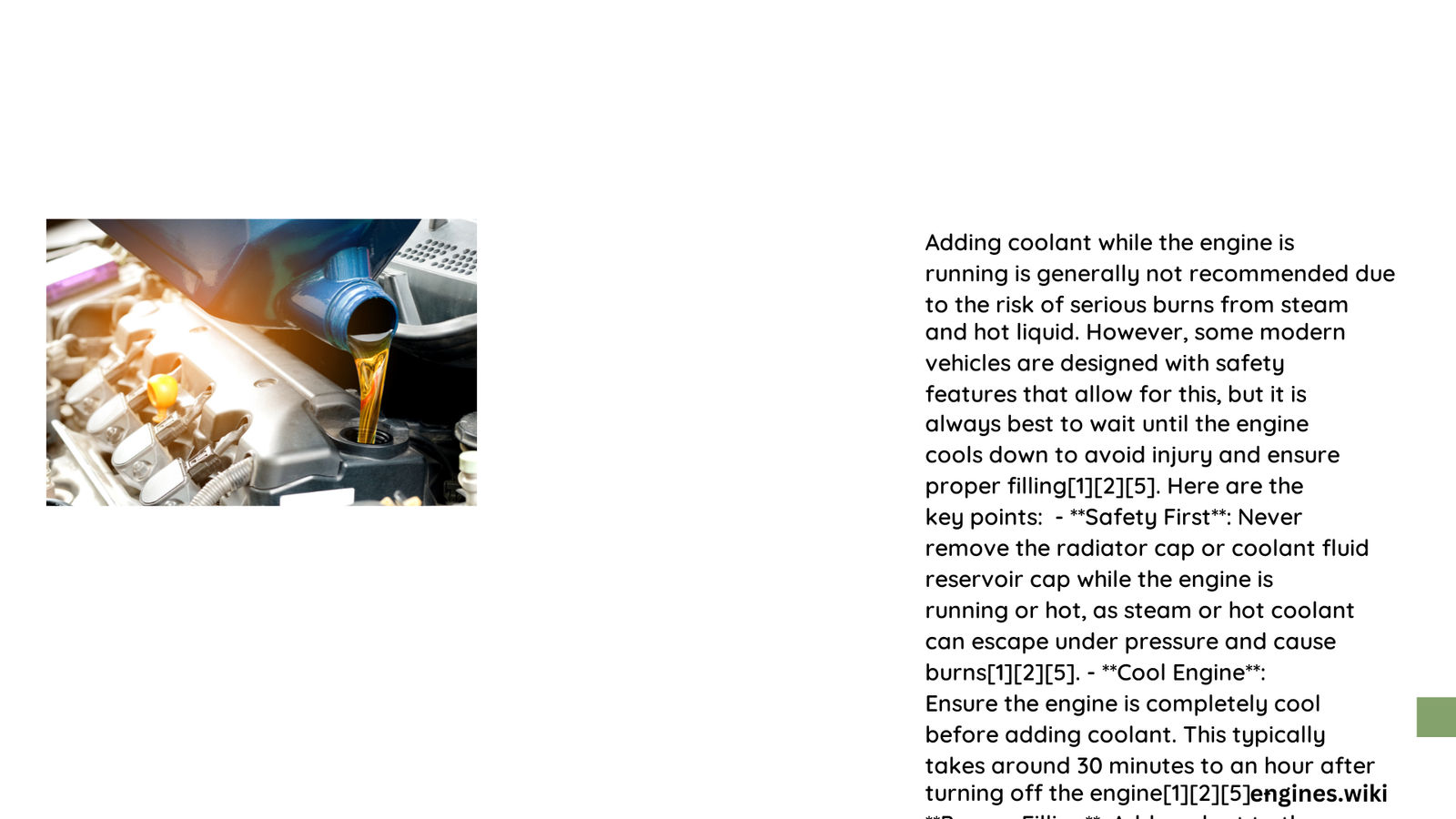Adding coolant to a running engine is a complex automotive maintenance task that requires careful consideration. Vehicle owners often wonder about the safety and potential consequences of introducing coolant while the engine is operational. The process involves understanding thermal dynamics, engine component stress, and potential risks that could lead to significant mechanical damage.
What Happens When Cold Coolant Meets Hot Engine?
When cold coolant is added to a hot engine, several critical mechanical interactions occur:
Thermal Shock Risks
- Rapid temperature differential causes metal components to contract unexpectedly
- Potential for microscopic fractures in engine block or cylinder heads
- Increased likelihood of warping critical engine structures
Pressure System Complications
| Potential Issue | Mechanical Impact | Probability |
|---|---|---|
| Uneven Pressure | Cooling System Damage | High |
| Air Pocket Formation | Reduced Cooling Efficiency | Medium |
| Component Stress | Seal and Gasket Failure | Medium-High |
Why Should You Avoid Adding Coolant to Running Engine?

The primary reasons for avoiding coolant addition during engine operation include:
- Thermal Expansion Risks
- Metal components expand at different rates
- Sudden temperature changes create internal stress
-
Potential for permanent structural damage
-
Circulation Disruption
- Coolant flow can become inconsistent
- Air bubbles might form in cooling system
- Increased overheating potential
Safe Coolant Replacement Procedure
Recommended Steps
- Wait for Engine Cooling: Allow engine to reach ambient temperature
- Use Correct Coolant Type: Match manufacturer specifications
- Check Overflow Tank: Add coolant to designated reservoir
- Maintain Proper Coolant-Water Ratio: Typically 50/50 mixture
Expert Recommendations for Coolant Management
Professional mechanics universally advise:
– Perform coolant checks when engine is completely cold
– Use distilled water for mixing
– Inspect cooling system regularly
– Replace coolant according to manufacturer’s schedule
Warning Signs of Coolant System Problems
Watch for these indicators:
– Persistent overheating
– Coolant leaks
– Unusual temperature fluctuations
– Steam from engine compartment
Technical Insights on Coolant Dynamics
Modern engines utilize sophisticated cooling technologies that require precise thermal management. Adding coolant while running can disrupt these delicate systems, potentially causing:
– Uneven heat distribution
– Compromised lubrication
– Accelerated component wear
Professional Perspective
Automotive engineers emphasize that modern engines are engineered with tight tolerances. Any unexpected thermal shock can lead to expensive repairs, making preventative maintenance crucial.
Practical Takeaway
Bottom Line: Never add coolant to a running or hot engine. Always wait until the engine reaches ambient temperature, then carefully add coolant to the designated reservoir following manufacturer guidelines.
Reference:
– SAE International Cooling System Standards
– Automotive Maintenance Technical Guidelines
– Professional Mechanic’s Coolant Management Guide
